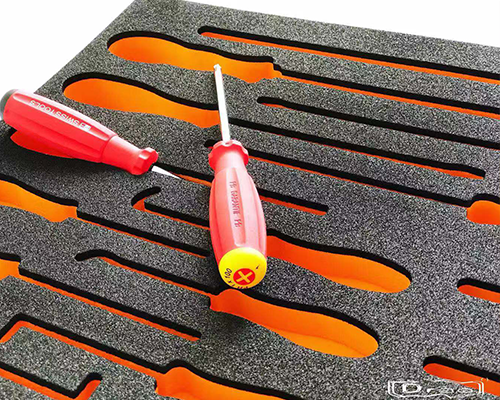13816854992
EVA processing product is a new type of environmental protection plastic foam material, which has the advantages of good cushioning, earthquake resistance, heat insulation, moisture-proof, chemical corrosion resistance, and non-toxic, non absorbent. EVA rubber and plastic products can be processed by design. Its shockproof performance is better than that of traditional foamed materials such as polystyrene (foam), and meets the requirements of environmental protection. It is the choice of export products. Compared with the shockproof packaging, it can be cut and shaped; because of the large difference in density, it can also be used more widely.
The foaming process of EVA foam: under the decomposition temperature, the foaming agent releases a lot of gas to form foam core. After the sudden pressure relief, the foam core pressure relief causes the expansion of EVA and other materials to form foam materials.
EVA foam features: water resistance: closed cell structure, no water absorption, moisture-proof, good water resistance. Corrosion resistance: resistant to seawater, oil, acid, alkali and other chemicals, antibacterial, non-toxic, tasteless, pollution-free. Processability: it is easy to be processed by hot pressing, tailoring, gluing and laminating. Anti vibration: high resilience and tension resistance, strong toughness, good shock / buffer performance. Thermal insulation: excellent heat insulation, cold insulation and low temperature performance, can withstand cold and exposure. Sound insulation: airtight bubble, good sound insulation effect.

The foaming mechanism of EVA foam is complex, and there are many influencing factors, so the quality of foam is difficult to control. In foaming, it is necessary to observe all kinds of phenomena in real time and adjust the formula in time, so as to produce foam with uniform pores, good resilience and high tensile strength.
Based on the practical experience of foam foaming, this paper discusses the quality control and defect correction in the field of foam foaming. In addition, the polymerization degree distribution will also affect the processing performance and product performance. PVC resin with narrow molecular weight distribution is better, so the processing performance and product performance are more uniform, which is conducive to the control of processing conditions and product quality. Low molecular weight will reduce the thermal stability, aging performance and mechanical properties of the products, but high molecular weight will make it difficult to evenly plasticize during processing, resulting in serious degradation of the internal and external quality of the products, and particles or "fish eyes" will appear. The plasticizing time of PVC resin is also an important selection index.
Too small particle size also has a certain effect on plasticization. The friction between particles decreases and the plasticization time increases. Therefore, it is required that the resin has good fluidity, larger particle size and narrow particle size distribution. High viscosity PVC powder and compact PVC powder are not conducive to foam foam.
In general, the loose suspension PVC resin with an average polymerization degree of 750-650k and a value of 59-55 is selected. It has good processing performance and is easy to be plasticized. It can be used in the production of large-scale board foaming ratio and the board thickness is easy to control the product qualification rate.
This paper expounds three problems: the adjustment of conventional foam formula, the adjustment of special foam formula, the cause analysis of common defects and the corrective measures. 1. The formula of conventional foam is adjusted under the reference condition of material temperature 18-20 "C and air temperature 20 ℃. The formula of cylindrical foam with foaming diameter of 2M and height of 1m is called the reference formula. Common reference formula is shown in table 1.0. Common reference formula is shown in table 1.0.